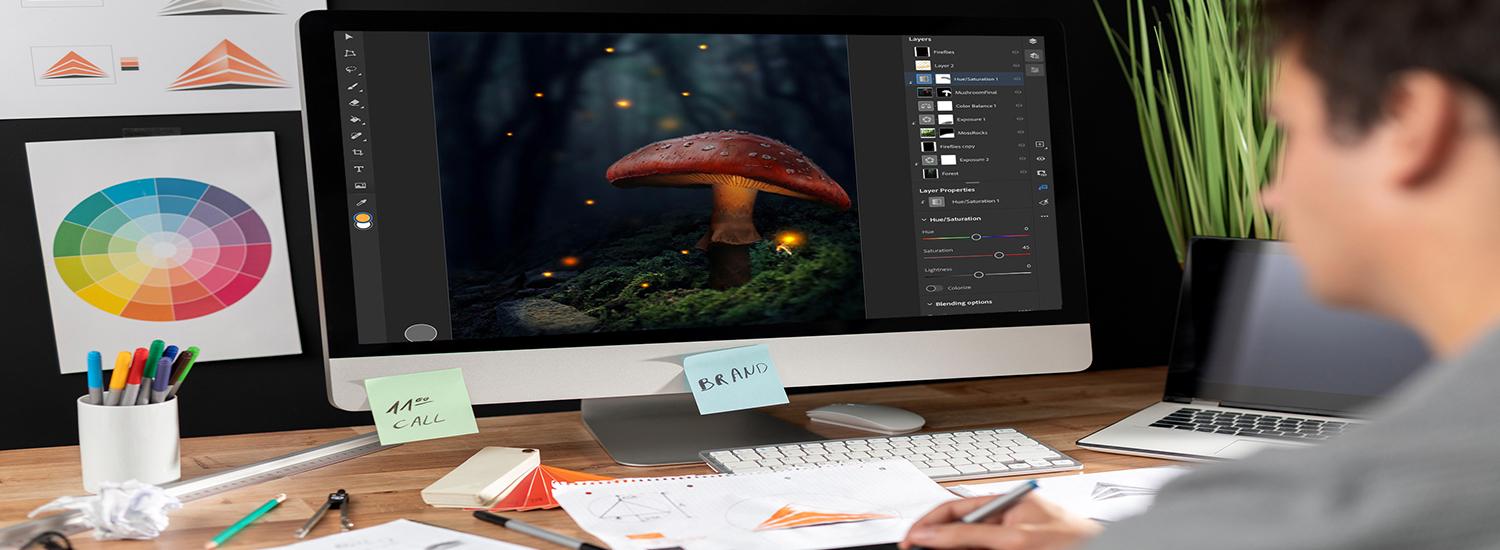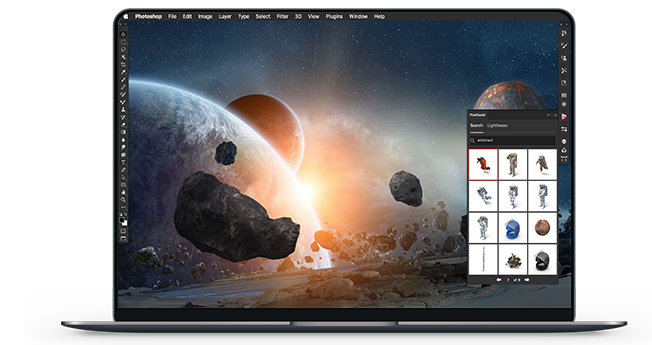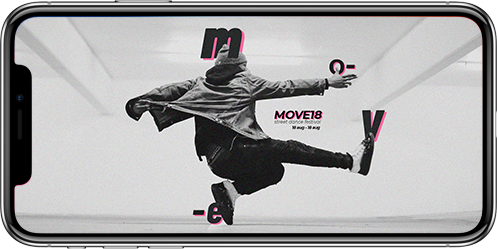
How we're different
What is Graphic Design? + -
Graphic design is a craft where professionals create visual content to communicate messages. By applying visual hierarchy and page layout techniques, designers use typography and pictures to meet users’ specific needs and focus on the logic of displaying elements in interactive designs, to optimize the user experience.
Graphic Design is about Molding the User Experience Visually + -
Graphic design is an ancient craft, dating back past Egyptian hieroglyphs to at least 17,000-year-old cave paintings. It’s a term that originated in the 1920s’ print industry. It continues to cover a range of activities including logo creation. Graphic design in this sense concerns aesthetic appeal and marketing. Graphic designers attract viewers using images, color and typography. However, graphic designers working in user experience (UX) design must justify stylistic choices regarding, say, image locations and font with a human-centered approach. That means you need to focus on—and seek to empathize the most with—your specific users while you create good-looking designs that maximize usability. Aesthetics must serve a purpose—in UX design we don’t create art for art’s sake. So, graphic designers must branch into visual design. When designing for UX, you should:
Consider the information architecture of your interactive designs, to ensure accessibility for users.
Leverage graphic design skills to create work that considers the entire user experience, including users’ visual processing abilities.
For instance, if an otherwise pleasing mobile app can’t offer users what they need in several thumb-clicks, its designer/s will have failed to marry graphic design to user experience. The scope of graphic design in UX covers the creation of beautiful designs that users find highly pleasurable, meaningful and usable.
Graphic Design is Emotional Design + -
Although to work in the digital age means you must design with interactive software, graphic design still revolves around age-old principles. It’s crucial that you strike the right chord with users from their first glance—hence graphic design’s correspondence with emotional design. As a graphic designer, then, you should have a firm understanding of color theory and how vital the right choice of color scheme is. Color choices must reflect not only the organization (e.g., blue suits banking) but also users’ expectations (e.g., red for alerts; green for notifications to proceed). You should design with an eye for how elements match the tone (e.g., sans-serif fonts for excitement or happiness). You also need to design for the overall effect, and note how you shape users’ emotions as you guide them from, for instance, a landing page to a call to action. Often, graphic designers are involved in motion design for smaller screens. They will carefully monitor how their works’ aesthetics match their users’ expectations. They can enhance their designs’ usability in a flowing, seamless experience by anticipating the users’ needs and mindsets. With user psychology in mind, it’s important to stay focused on some especially weighty graphic design considerations, namely these:
Symmetry and Balance (including symmetry types)
Flow
Repetition
Pattern
The Golden Ratio (i.e., proportions of 1:1.618)
The Rule of Thirds (i.e., how users’ eyes recognize good layout)
Typography (encompassing everything from font choice to heading weight)
Audience Culture (regarding color use—e.g., red as an alert or, in some Eastern cultures, a signal of good fortune—and reading pattern: e.g., left to right in Western cultures)
Learn more about Graphic Design + -
Take a deep dive into Graphic Design with our course UI Design Patterns for Successful Software .
Have you ever found yourself spotting shapes in the clouds? That is because people are hard-wired to recognize patterns, even when there are none. It’s the same reason that we often think we know where to click when first experiencing a website—and get frustrated if things aren’t where we think they should be. Choosing the right user interface design pattern is crucial to taking advantage of this natural pattern-spotting, and this course will teach you how to do just that.
User interface design patterns are the means by which structure and order can gel together to make powerful user experiences. Structure and order are also a user’s best friends, and along with the fact that old habits die hard (especially on the web), it is essential that designers consider user interfaces very carefully before they set the final design in stone. Products should consist of such good interactions that users don’t even notice how they got from point A to point B. Failing to do so can lead to user interfaces that are difficult or confusing to navigate, requiring the user to spend an unreasonable amount of time decoding the display—and just a few seconds too many can be “unreasonable”—rather than fulfilling their original aims and objectives.
While the focus is on the practical application of user interface design patterns, by the end of the course you will also be familiar with current terminology used in the design of user interfaces, and many of the key concepts under discussion. This should help put you ahead of the pack and furnish you with the knowledge necessary to advance beyond your competitors.
So, if you are struggling to decide which user interface design pattern is best, and how you can achieve maximum usability through implementing it, then step no further. This course will equip you with the knowledge necessary to select the most appropriate display methods and solve common design problems affecting existing user interfaces.

How do you select the best designers?
Our team of curation experts can pick the right talent, based on style, skill and interest for each and every project. With many designers having more than 10 years experience
Founding & executive teams
We’ll lead your brand development, help craft your story, and deliver a unique set of guidelines so you can repeat it with consistency.
Communication teams
We'll help you deliver the design components of your creative campaigns and ensure this will resonate with your audience.
Brand teams
Get fresh global perspectives fast. Innovate! Create special edition products, branded illustrations or rebrand it all.

We offer full-service creative delivery powered by global talent.
When you think of graphic design, do you think of artistic advertising? Eye-catching graphics on websites? Stunningly arranged spreads in magazines? While these examples certainly fit the definition of graphic design, the term includes a lot: posters, infographics, book covers, product labels, logos, business cards, banners, website layouts, mobile apps, software interfaces—the list goes on.
Tell us what you need designed
What can I
get designed?
Pretty much anything! Our professional designers can create logos, branding, websites, packaging and more. Take a look at all of our categories.
How long
does it take?
Quick turnaround for simple tasks, longer timelines for big projects.
How much
does it cost?
Every design category has flexible pricing for all budgets.
how do
we work
We make great design work happen with our global community of professional designers. If you'd like to speak to a human, talk to one of our design experts.